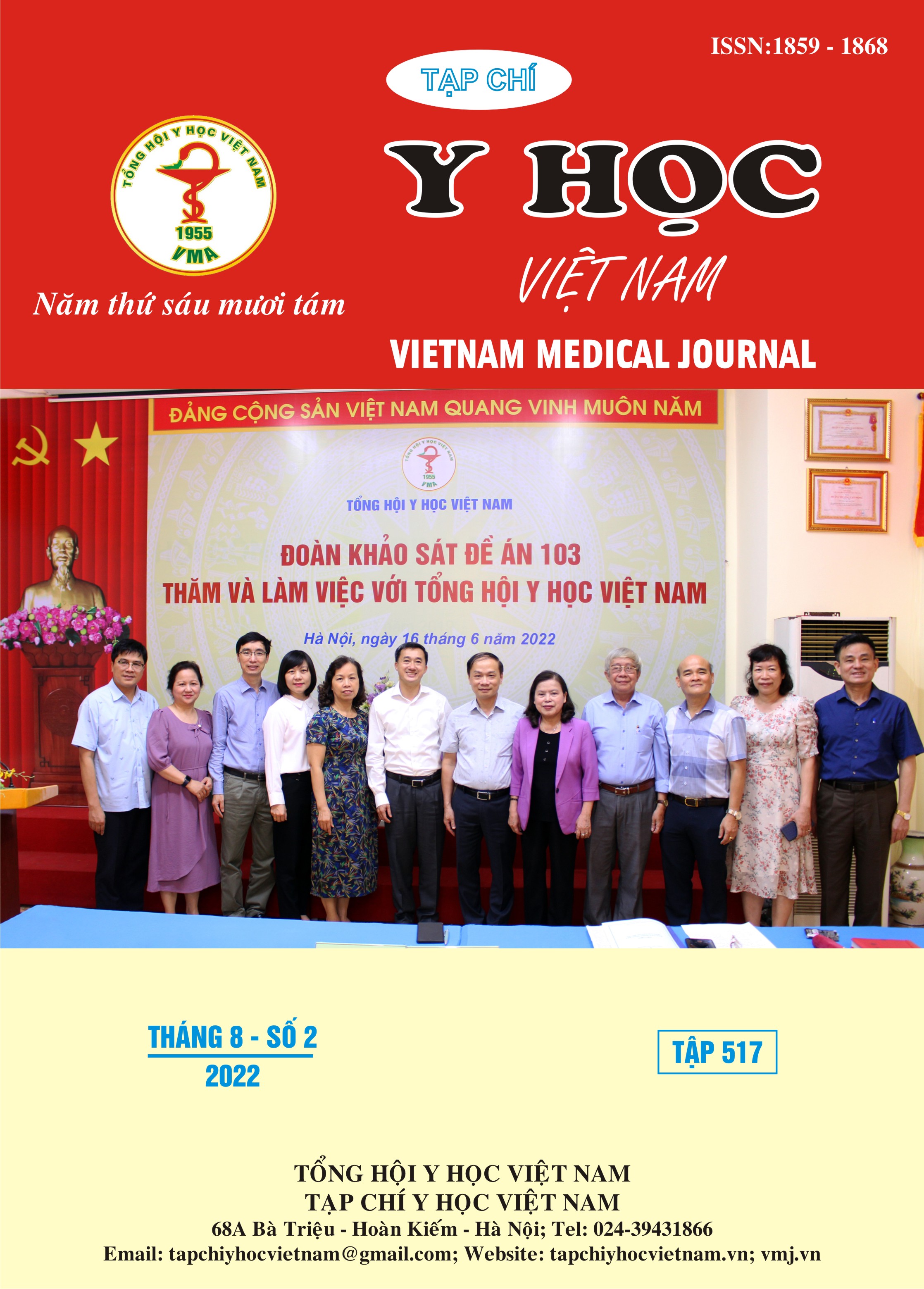CHARACTERISTICS OF COLONOSCOPY RESULT AND PATHOLOGY IN PATIENTS WITH IRRITABLE BOWEL SYNDROME – LIKE SYMPTOMS ACCORDING TO ROME IV CRITERIA
Main Article Content
Abstract
Objects: Describe symptoms, colonoscopy results, pathology (if available) of the group of patients with or without alarm features according to ROME IV criteria and identify some risk factors in the group of patients with colorectal advanced neoplasms. Subjects and methods: Cross – sectional study, recording symptoms and colonoscopy results of patients 18 years and older underwent colonoscopy at with IBS-like symptoms. Results: We collected 265 cases completed colorectal endoscopy: 163 patients (61,5%) have ROME IV IBS-like symptoms; 41,72% of them had normal colonoscopy result; 95 cases had lesion, include: 33,74% colitis, 9,82% adenoma and 3,68% colorectal cancer. In the group of patients not having any alarm features, the rate of anatomic abnormalities was low, and no colorectal advanced neoplasms was recorded. The predictive models for colorectal advanced neoplasms are: (1) age, rectal bleeding, weight loss (OR: 1,07, 10,47 and 7,74); (2) rectal bleeding, weight loss and APCS score (OR: 7,47, 1,41 and 2). Conclusion: In the group of patients with no alarm features, the majority has normal colonoscopy results. Rate of colorectal advanced neoplasms is low in IBS-like symptoms; but all of them have alarm features and high APCS score. Therefore, before diagnosing IBS, we suggest that attention should be paid to eliminate these risk factors.
Article Details
Keywords
Irritable bowel syndrome, alarm feature, Asian - Pacific Colorectal Screening (APCS) score, colorectal advanced neoplasms
References
2. Duc Trong Quach, et al (2018), "Asia-Pacific Colorectal Screening score: A useful tool to stratify risk for colorectal advanced neoplasms in Vietnamese patients with irritable bowel syndrome", J Gastroenterol Hepatol, 33 (1), pp. 150-155.
3. J. Hammer, et al (2004), "Diagnostic yield of alarm features in irritable bowel syndrome and functional dyspepsia", Gut, 53 (5), pp. 666-672.
4. Khay-Guan Yeoh, et al (2011), "The Asia-Pacific Colorectal Screening score: a validated tool that stratifies risk for colorectal advanced neoplasia in asymptomatic Asian subjects", Gut, 60 (9), pp. 1236.
5. Mukesh Sharma Paudel, et al (2018), "Prevalence of Organic Colonic Lesions by Colonoscopy in Patients Fulfilling ROME IV Criteria of Irritable Bowel Syndrome", JNMA J Nepal Med Assoc, 56 (209), pp. 487-492.
6. Purav Patel, et al (2015), "Prevalence of organic disease at colonoscopy in patients with symptoms compatible with irritable bowel syndrome: cross-sectional survey", Scandinavian Journal of Gastroenterology, 50 (7), pp. 816-823.
7. Rebecca M. Lovell, Alexander C. Ford (2012), "Global prevalence of and risk factors for irritable bowel syndrome: a meta-analysis", Clin Gastroenterol Hepatol, 10 (7), pp. 712-721.e4.
8. W. E. Whitehead, et al (2006), "Utility of red flag symptom exclusions in the diagnosis of irritable bowel syndrome", Aliment Pharmacol Ther, 24 (1), pp. 137-46.


